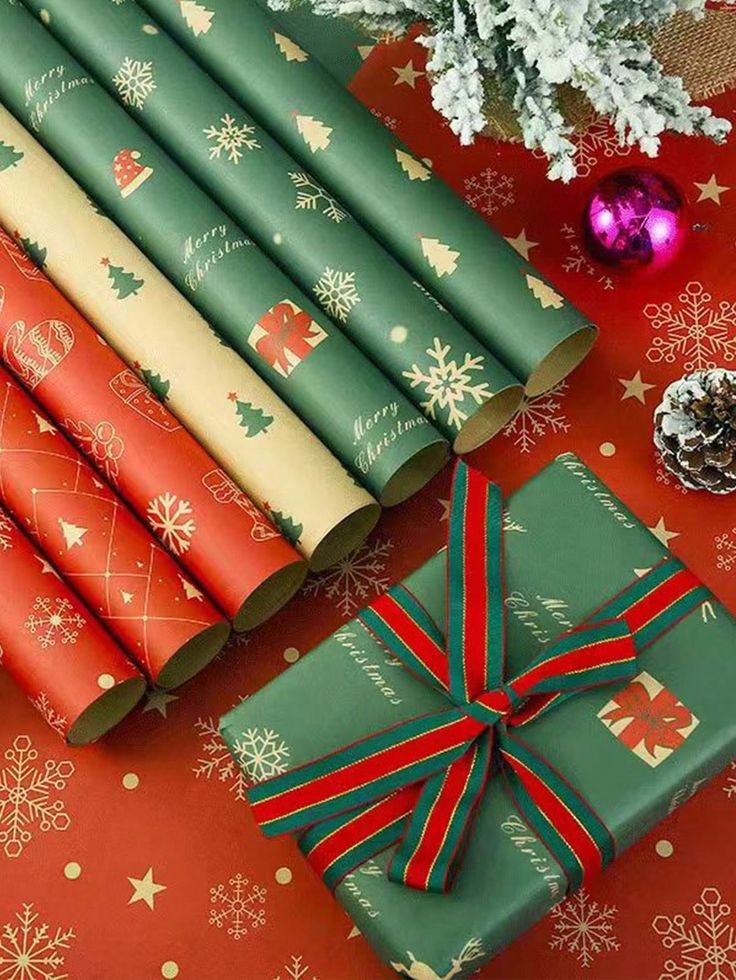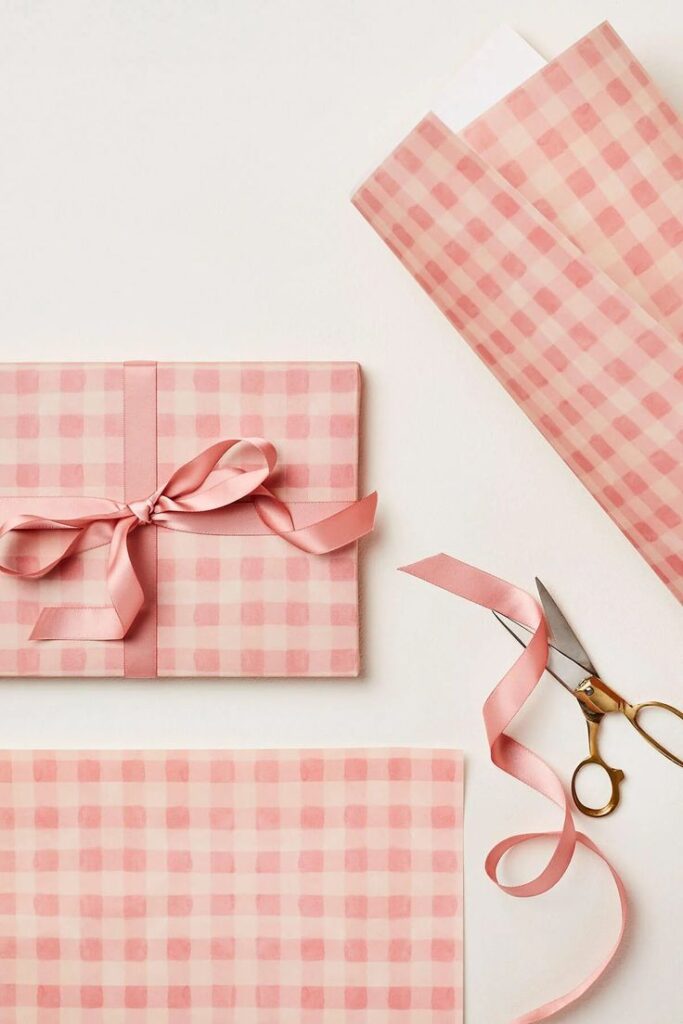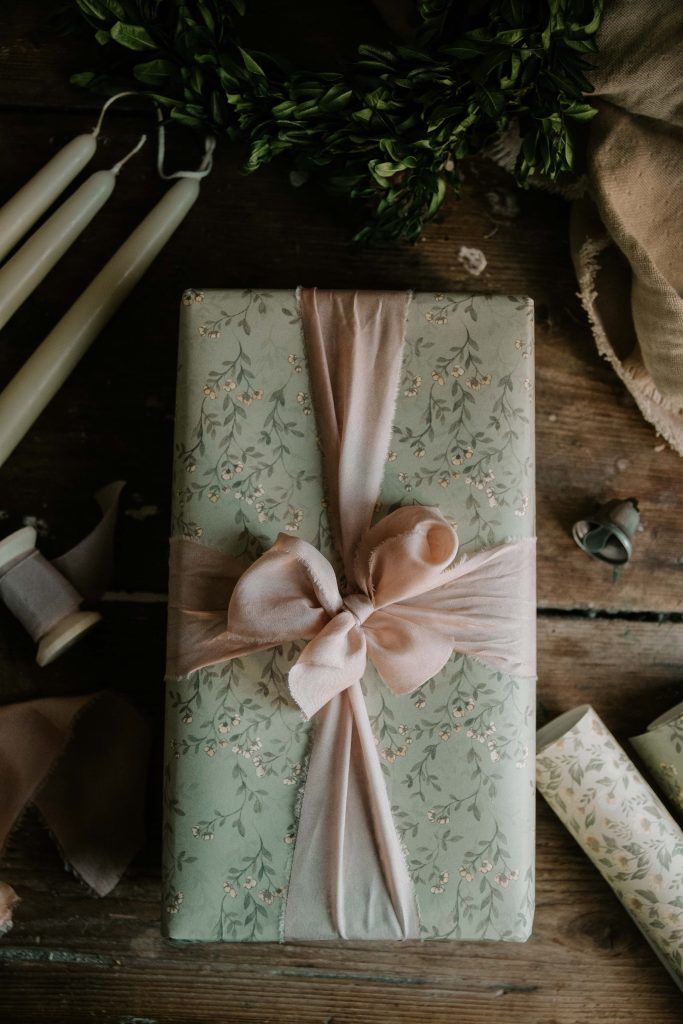Gift wrapping is an art that elevates your presents and shows your thoughtfulness. Learning how to wrap gifts effectively not only enhances their appearance but also makes the experience of giving more enjoyable. Mastering the basics can transform even the simplest items into memorable gifts that delight recipients.
You don’t need to be a professional to achieve beautiful results. With the right materials and techniques, you can create stunning packages for any occasion. By incorporating personal touches and advanced wrapping methods, you can make your gifts stand out and reflect your style.



Key Takeaways
- Use quality materials for a polished look.
- Master basic techniques for efficient wrapping.
- Add personal touches to make gifts special.
Materials Required for Gift Wrapping
To effectively wrap gifts, you’ll need a selection of essential materials. Understanding the different types of wrapping paper, tape, ribbons, and additional decorative elements is crucial for a polished appearance.
Choosing the Right Wrapping Paper
Selecting the right wrapping paper can enhance the presentation of your gift. Consider the occasion; for birthdays, choose colorful designs or prints. For more formal events like weddings, opt for elegant designs in solid colors or delicate patterns.
Quality matters too. Thicker paper is easier to work with and provides a polished look. Lightweight paper may tear easily but can work for smaller items. Don’t forget to check the pattern alignment; wrapping paper with a specific design should appear straight and organized when wrapped.
Types of Tape and Their Uses
Tape is essential for securing your wrapped gift. The most common choice is standard adhesive tape, which is generally strong enough for most paper types.
Double-sided tape can be useful for a seamless look. It holds paper down without showing, which creates a neater finish. For heavier items, consider using packing tape or specialty tape designed for gift wrapping.
Also, double-check that the tape is clear or matches your wrapping paper to maintain a cohesive aesthetic.
Varieties of Ribbons and Bows
Ribbons and bows add a decorative touch to your wrapped gifts. You can choose from various materials like satin, grosgrain, or sheer ribbon, each providing a different feel.
Consider the color and texture; metallic ribbons offer a festive sparkle, while fabric ribbons lend an elegant touch. You can create bows or simple knots, depending on your skill level or desired style.
Pre-made bows can simplify your wrapping process and still look impressive.
Additional Decorative Elements
Incorporating decorative elements can personalize your gifts. Tissue paper can fill empty space inside boxes or create a beautiful layer beneath the wrapping paper.
Gift toppers—such as ornaments, flowers, or themed decorations—can also enhance the appearance. Tags provide a functional and decorative solution for labeling gifts.
Choose materials that coordinate with your wrapping paper and ribbons for a cohesive look.



The Basics of Gift Wrapping
Gift wrapping requires attention to detail and some basic techniques. By mastering a few essential steps, you can achieve a neat and attractive presentation for any gift.
Measuring and Cutting Wrapping Paper
Begin by selecting a wrapping paper that matches the occasion. Lay your gift on a flat surface. To determine the amount of paper needed, roll the gift to find the length and width.
Steps:
- Measure the width of the gift.
- Add twice the height to your width for overlap.
- Measure the length, adding an extra 2-4 inches for coverage.
Once you have your dimensions, use scissors to cut the wrapping paper. Ensure the cuts are straight for a polished look. Keeping a sharp pair of scissors handy will help achieve clean edges.
Folding Techniques for Clean Edges
Folding is crucial for a professional appearance. Start by placing the gift in the center of the paper, ensuring equal amounts on each side.
Folding process:
- Fold one side of the paper over the gift, tucking the edge neatly.
- Repeat on the opposite side.
- For the ends, create triangular folds by pushing the sides in toward the center.
Maintain crisp folds by using a flat object, like a ruler, along the edges. This will give your gift a clean and finished look.
Securing the Gift Wrap with Tape
Using tape is essential to keep your gift wrap in place. Choose a quality tape that adheres well.
Tips for taping:
- Start by taping the folded paper on the bottom of the gift.
- Use small pieces of tape for a neater finish, applying them at intervals along the edge.
- For the ends, after finishing your triangular folds, secure them with a piece of tape on each side.
Make sure the tape is not visible on the top of the gift. This attention to detail enhances the overall appearance.



Advanced Wrapping Techniques
Enhancing your gift wrapping skills can elevate the presentation of any present. Mastering specific techniques, such as creating elegant pleats and expertly handling irregular shapes, will help you achieve a polished look.
Creating Pleats and Folds for Elegance
To add sophistication to your gift wrapping, use pleats and folds. Start by cutting a piece of wrapping paper larger than the gift.
- Place the Gift: Position your gift in the center of the paper.
- Create Pleats: Begin folding the edges of the paper toward the gift, pinching as you go to create evenly spaced pleats.
Use double-sided tape to secure the pleats in place without visible adhesive. For a seamless finish, fold the top and bottom edges inward before taping down. This technique not only enhances visual appeal but also provides structure to the wrap.
Wrapping Irregularly Shaped Gifts
Wrapping items with unique shapes requires creativity. Start by assessing the object’s dimensions.
- Use Padding: If the gift is particularly awkward, consider wrapping it in tissue paper or fabric first for extra cushioning.
- Select Your Paper Wisely: Choose a forgiving wrapping paper that can bend and fold easily.
Begin by covering the largest area and then work toward the smaller sections, tucking and adjusting as necessary.
Employ double-sided tape for a clean finish. This approach keeps edges smooth and avoids unsightly seams. Take your time with the folds to ensure they are neat and deliberate.



Adding the Finishing Touches
Enhancing your gift presentation with thoughtful details can transform a simple wrap into a memorable gift. Focusing on ribbons, bows, and gift tags adds personal flair. You can also include delicate tissue paper for an extra touch of elegance.
Choosing and Applying Ribbons and Bows
When selecting ribbon, consider the occasion and the color scheme of your wrapping paper. Satin, burlap, and organza are popular choices that add texture and shine. Measure enough ribbon to create a bow, allowing for some extra length for tails.
To apply the ribbon, start by wrapping it around the gift. Cross the ends, twist, and form a knot. If using a bow, make sure it’s symmetrical. You can also use wire-edged ribbon for a more structured bow that holds its shape. Secure your bow with glue dots for extra stability.
Attaching Gift Tags and Cards
Gift tags and cards personalize your gifts and can convey a special message. Choose tags that match or complement your wrapping paper for a cohesive look. You can create custom tags using cardstock or buy pre-made ones.
Attach the tag by threading a piece of string or ribbon through the hole. Ensure it’s securely fastened and positioned attractively. Write a clear message with a permanent marker or pen, keeping it brief but heartfelt. For a special touch, consider adding a small photo or drawing on the tag.
Using Tissue Paper for a Delicate Finish
Tissue paper can add a layer of sophistication to your gift. Use it to cushion fragile items or to enhance the presentation. Choose colors that contrast or complement your wrapping paper for an eye-catching effect.
To use tissue paper, cut it into squares or rectangles larger than the gift. Place the gift in the center and gather the edges together, creating a pouch. Tie it with string or ribbon to hold it in place. This adds an unexpected surprise when the recipient opens their gift.



Gift Wrapping for Special Occasions
Wrapping gifts for special occasions requires attention to detail and creativity. Effective techniques can elevate your presents and create a delightful presentation.
Christmas Presents Wrapping Techniques
When wrapping Christmas presents, first choose high-quality gift wrap in festive colors or patterns. Consider traditional options like red, green, or gold, or explore modern designs with playful motifs.
Measuring the Wrap: Measure the paper against the gift. Ensure it overlaps on the bottom for a neat finish.
Sealing the Edges: Use double-sided tape for a clean appearance. Avoid using too much tape, which can create bulk.
Embellishing: Add ribbons, bows, or ornaments to enhance the look. Consider personal touches like gift tags with the recipient’s name.
A well-wrapped gift adds joy to the giving experience.
Tips and Tricks for Efficient Gift Wrapping
Choose the Right Materials
Use quality wrapping paper, tape, and scissors. Consider fabric, tissue paper, or reusable gift bags for eco-friendly options.Measure Before You Cut
Always measure your paper. Leave a few extra inches on each side to ensure complete coverage.Use a Flat Surface
Wrap gifts on a large, flat surface. This makes it easier to manage the paper and achieve precise folds.Secure with Tape
Use double-sided tape for a seamless look. Make sure all edges are secured to prevent the wrapping paper from peeling.Add Personal Touches
Include personalized gift tags or embellishments like ribbons and bows. This adds a unique touch and makes the gift stand out.Practice Your Folds
Perfect your folding technique for a polished finish. Clean lines create a professional appearance.Use Boxes for Odd Shapes
If the gift is an unusual shape, consider placing it in a box. This simplifies the wrapping process.Create an Assembly Line
If wrapping multiple gifts, set up an assembly line. Cut all paper first, then wrap each gift sequentially.
Following these tips can enhance your gift-wrapping efficiency and ensure your gifts are beautifully presented.
Storing Gift-Wrapping Materials
Organizing gift-wrapping materials can save you time and effort during the busy gift-giving season. Here are practical tips for effective storage.
Use a Designated Storage Container
Select a sturdy box or tote specifically for gift-wrapping supplies. This can keep everything in one place.
Sort by Material Type
Group your items into categories:
- Wrapping Paper: Roll and secure with a rubber band or clip.
- Gift Bags: Stack them by size and type.
- Ribbons and Bows: Store in small bins or pouches to avoid tangling.
Maximize Vertical Space
Consider a vertical storage option, such as a standing organizer. This can help you utilize closet or shelf space effectively.
Create a Supply Checklist
Maintain a list of your wrapping materials. Include:
- Wrapping paper rolls
- Gift bags
- Ribbons
- Tape
- Scissors
Regularly update this list to know what to replenish.
Keep Essentials Accessible
Store frequently used items, like scissors and tape, in an easily accessible location. A small caddy can work well for this purpose.
By following these storage tips, you can ensure that your gift-wrapping supplies are organized and ready for any occasion.
- 140shares
- Facebook0
- Pinterest140
- Twitter0


